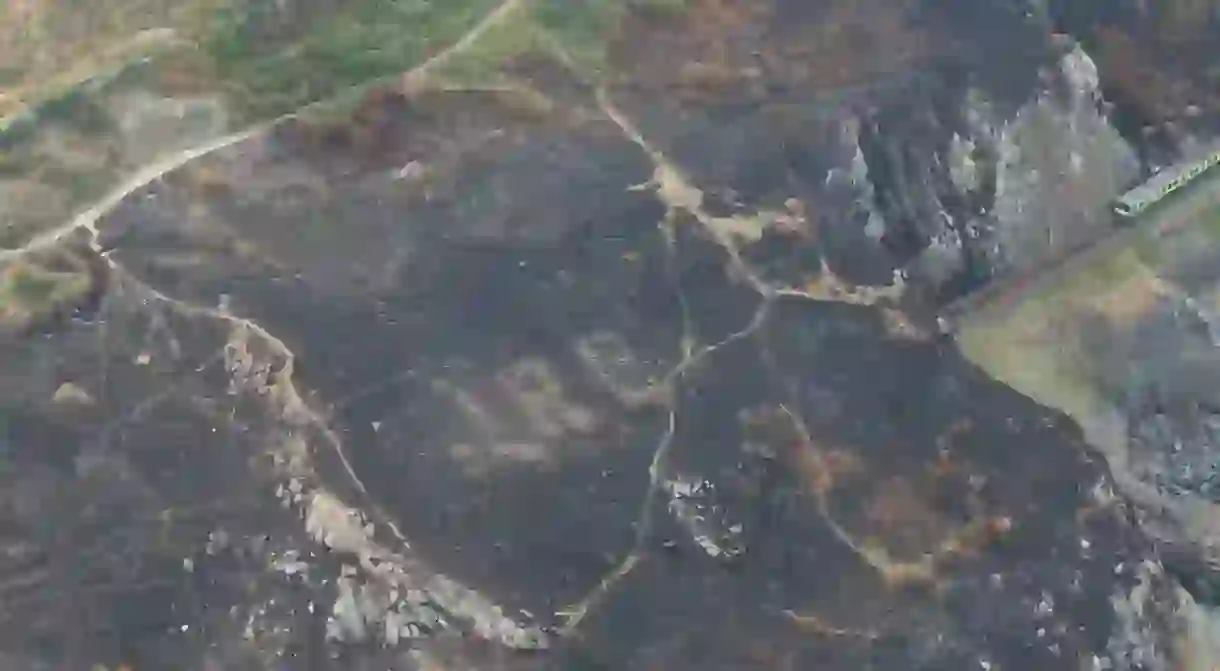Wildfires Have Revealed a Hidden WWII Sign on the Irish Coast

Wildfires on the eastern coast of Ireland have revealed a World War II-era aerial warning sign previously erased from view by undergrowth.
Brought to the surface by the flames, the large white block letters etched into the scorched ground, reading Éire, were discovered by the Garda (Irish police) Air Support Unit as they flew over Bray Head, Country Wicklow following the fire.
Fires on Bray Head expose amazing World War 2 landmarks. The fires exposed the old Eire 8 sign,which is in reasonable condition. Photos courtesy of the Garda Air Support Unit, which is a mixed unit operated by Air Corps Pilots and Garda specialists. @gardainfo @opwireland pic.twitter.com/4vvg3HIjQv
— Irish Air Corps (@IrishAirCorps) August 4, 2018
The word Éire translates as “Ireland” in Gaelic. The sign’s purpose was to alert both allied and German bombers that they were in flight above Ireland, a neutral country. The Bray’s Head discovery is one of over 80 similar whitewashed signs carved into the ground across the country during the war. The Éire landmarks were also numbered as lookout posts. The Bray sign was number eight according to a tweet from the Irish Defence Forces.
Although some of the country’s Éire signs have remained in plain sight since the war, the one atop Bray’s Head was entirely covered by undergrowth and thus invisible to the eye until the blaze on 2 August. Although the É is not as clear as the rest of the letters, it is otherwise in decent condition.
A Garda Air Support Unit crew spotted that the fire on Bray Head has revealed an “EIRE” sign dating from the Second World War.
We see these around the coastline but haven’t seen this before. pic.twitter.com/I6cwIrIori
— An Garda Síochána (@GardaTraffic) August 4, 2018
A spokesperson explained to Irish broadcaster RTE that “The signs themselves are quite common on the west coast but unusual on the east.” Thus the discovery is an exciting one.
The summer’s heatwave has exposed a number of previously hidden sights including the outline of a 17th-century garden at Chatsworth House and a previously undiscovered henge in County Meath dating back to the early Bronze Age.













